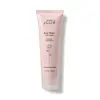What's inside
What's inside
 Key Ingredients
Key Ingredients

No key ingredients
 Benefits
Benefits

 Concerns
Concerns

 Ingredients Side-by-side
Ingredients Side-by-side

Water
Skin ConditioningSodium Cocoyl Isethionate
CleansingGlyceryl Stearate Se
EmulsifyingHydroxypropyl Starch Phosphate
Cocos Nucifera Oil
MaskingDecyl Glucoside
CleansingGlyceryl Oleate
EmollientGlycerin
HumectantPaeonia Lactiflora Root Extract
Skin ConditioningChamomilla Recutita Flower Extract
MaskingAnthemis Nobilis Flower Oil
MaskingRubus Fruticosus Fruit Extract
AstringentEuterpe Oleracea Fruit Extract
Rosa Canina Fruit Extract
AstringentCalendula Officinalis Flower Extract
MaskingAspalathus Linearis Leaf Extract
Skin ConditioningPunica Granatum Extract
AstringentArgania Spinosa Callus Culture Extract
Skin ConditioningJojoba Esters
EmollientHydrolyzed Jojoba Esters
Skin ConditioningLecithin
EmollientIsomalt
HumectantSclerotium Gum
Emulsion StabilisingGlycerophosphoinositol Lysine
Glyceryl Caprylate
EmollientDisodium Coco-Glucoside Citrate
EmulsifyingSodium Lauroyl Lactylate
EmulsifyingEthylhexylglycerin
Skin ConditioningPhenethyl Alcohol
MaskingWater, Sodium Cocoyl Isethionate, Glyceryl Stearate Se, Hydroxypropyl Starch Phosphate, Cocos Nucifera Oil, Decyl Glucoside, Glyceryl Oleate, Glycerin, Paeonia Lactiflora Root Extract, Chamomilla Recutita Flower Extract, Anthemis Nobilis Flower Oil, Rubus Fruticosus Fruit Extract, Euterpe Oleracea Fruit Extract, Rosa Canina Fruit Extract, Calendula Officinalis Flower Extract, Aspalathus Linearis Leaf Extract, Punica Granatum Extract, Argania Spinosa Callus Culture Extract, Jojoba Esters, Hydrolyzed Jojoba Esters, Lecithin, Isomalt, Sclerotium Gum, Glycerophosphoinositol Lysine, Glyceryl Caprylate, Disodium Coco-Glucoside Citrate, Sodium Lauroyl Lactylate, Ethylhexylglycerin, Phenethyl Alcohol
 Reviews
Reviews

Alternatives
Ingredients Explained
These ingredients are found in both products.
Ingredients higher up in an ingredient list are typically present in a larger amount.
Calendula Officinalis Flower Extract comes from the common Marigold plant. This ingredient is a skin conditioner.
Marigolds contain flavonoids. Flavonoids are a group of substances found naturally in plants. They possess antioxidant and inflammation properties.
This ingredient soothes skin inflammation by inhibiting inhibiting a part of the inflammation process.
Marigolds have been used in traditional medicine throughout Asia and Europe.
Learn more about Calendula Officinalis Flower ExtractChamomilla Recutita Flower Extract comes from the Chamomile flower.
Chamomile is rich in antioxidants and has anti-inflammatory properties. Several compounds found in chamomile help with soothing, such as bisbolol.
Antioxidant components in chamomile make it an effective ingredient to help slow the signs of aging. Antioxidants help fight free-radical molecules, or molecules that may damage your skin.
Essential oils from chamomile have been found to improve wound healing due to its antimicrobial properties.
Ancient Greeks and Egyptians used Chamomile to treat skin redness and dryness. Chamomile has also been used to help treat stomach issues.
Learn more about Chamomilla Recutita Flower ExtractDecyl Glucoside is a glucose-based surfactant and emulsion stabilizer. It is created by reacting glucose with the fatty acids from plants.
Surfactants help clean the skin by trapping oil, sebum, and dirt to be washed away. As an emulsion stabilizer, it stabilizes the ingredients in a product by preventing them from separating.
This ingredient is biodegradable and non-toxic. This ingredient is commonly found in baby shampoos.
Decyl Glucoside is sometimes used to stabilize the UV filter Tinosorb.
Learn more about Decyl GlucosideGlycerin is already naturally found in your skin. It helps moisturize and protect your skin.
A study from 2016 found glycerin to be more effective as a humectant than AHAs and hyaluronic acid.
As a humectant, it helps the skin stay hydrated by pulling moisture to your skin. The low molecular weight of glycerin allows it to pull moisture into the deeper layers of your skin.
Hydrated skin improves your skin barrier; Your skin barrier helps protect against irritants and bacteria.
Glycerin has also been found to have antimicrobial and antiviral properties. Due to these properties, glycerin is often used in wound and burn treatments.
In cosmetics, glycerin is usually derived from plants such as soybean or palm. However, it can also be sourced from animals, such as tallow or animal fat.
This ingredient is organic, colorless, odorless, and non-toxic.
Glycerin is the name for this ingredient in American English. British English uses Glycerol/Glycerine.
Learn more about Glycerin